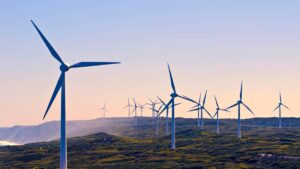Renewables face a big hiccup in 2020

Pic: Getty
Renewable energy adoption is likely to be impacted by the COVID-19 pandemic due to a fall in demand and interruptions to the supply chain.
The International Energy Agency said that it was reviewing its October 2019 forecast that 2020 would be a record year for additions to renewable energy generation, noting that cheap fossil fuels and economic slowdown was hampering growth.
This was supported by global resources consultancy Wood Mackenzie, which noted that customer-driven solar, battery storage and electric vehicles (EV) faced outsized impacts due to the economic shock.
Woodmac says it has revised its solar installation expectations by 18 per cent from pre-COVID-19 levels of about 129.5 gigawatts (GW) to 106.4GW.
While utility (large)-scale projects are likely to see timelines shift, residential along with commercial and industrial will struggle as customers come under significant economic pressure past the lockdown.
Should there be no prolonged recession or major changes to financing and utility procurement, Woodmac expects installations in 2021 to recover to about 3 per cent below the pre-virus levels.
Storage battery installations are also expected to fall by 20 per cent due to project execution delays, though it is expected to recover to pre-pandemic levels in 2021.
Woodmac also expects EV sales to drop 43 per cent year-on-year in 2020, but sales in China and the European Union are expected to recover to 2019 levels.
Meanwhile, onshore wind additions are expected to decline by 4.9GW to 73GW in 2020 with India representing additional downside risk while travel restrictions and mitigation efforts pose further risks in Japan, Australia, Vietnam and other parts of Asia.
Factory shutdowns could also affect installations, with Siemens-Gamesa announcing furloughs at its US blade and nacelle facilities.
However, Woodmac expects the downside risk for offshore wind to be minimal as China restarts, Europe was already bracing for a slowdown and US projects are still too immature.
It isn’t all doom and gloom though, Poland’s largest utility Polska Grupa Energetyczna (PGE) remains committed towards growing its renewable energy portfolio.
PGE is looking to increase its installed offshore wind capacity to 2.5GW by 2030 and to increase its solar portfolio to 2.5GW by the same period.
Related Topics
UNLOCK INSIGHTS
Discover the untold stories of emerging ASX stocks.
Daily news and expert analysis, it's free to subscribe.
By proceeding, you confirm you understand that we handle personal information in accordance with our Privacy Policy.








